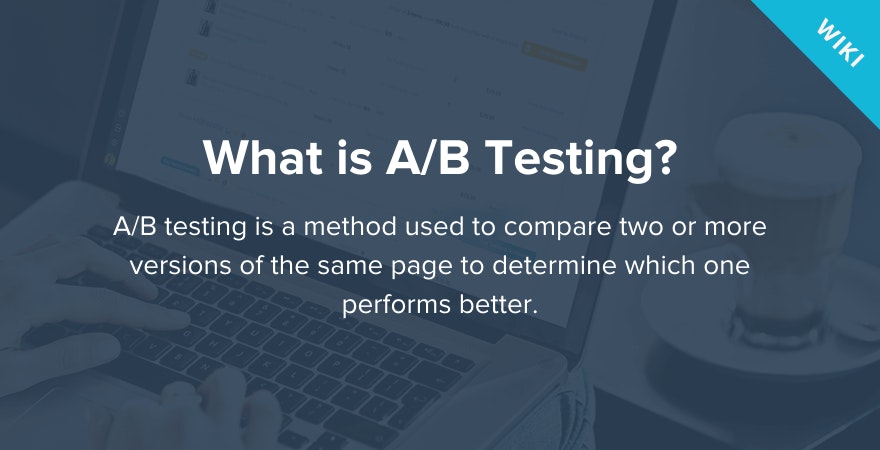
A / B测试
What is A/B Testing?
A/B testing, also known as split testing, is a testing method used to compare two or more versions of the same page or app to determine which one converts or performs better. Although the name (A/B testing) suggests the experiment is conducted to compare two pages, it can actually include as many pages as desired.

Start your free trial on Shopify today!
Start Free TrialHow Does A/B Testing Work?
To run an A/B test, choose which element (only one at a time) of your page you’d like to test (e.g., CTA button, headline, copy, image, video, etc.) and change it in one version of the page.
Then, show these versions to two audiences of a similar size and use statistical analysis to determine which variation performed better for a set conversion goal. You can also consider making your entire landing page oremail campaigna variable, which would mean creating two completely different pages (or email campaigns) and testing them against each other.
确保实验产生瓦尔id results, you need to set up something known as “control”. Control is simply the unaltered version of your landing page that is currently in use or is regarded as the primary choice. It will be used tobenchmark the results. The different versions of the control page that you will build are known as “treatments” or “challenger pages”. After you run your A/B test and analyze the results, you will decide which of the page variant is the “champion” page (a winner page with the best performance).
When it comes to assigning traffic to page variants, it’s essential to keep it random. The rule of thumb is to send similar amounts of traffic to both variant pages to maintain the integrity of the test and achieve conclusive results — the most common way to split traffic is 50/50 or 60/40. It’s also key to remember that the experiment requires you to run two or more variations simultaneously, as time plays a central role in A/B testing.
To ensure the experiment is clean, follow these A/B testing best practices:
- Run the test for at least 7 days to avoid seasonality or timing effects
- Ensure each page receives a minimum of 100 unique visitors
- Have a very clear purpose (and hypothesis) for why you are testing
Why Should You Run A/B Testing?
A/B testing takes the guesswork out of page optimization and provides you with solid data to make well-informed decisions about improving on-page conversions. Acquiring paid traffic can be a costly exercise, while the cost of improving your conversions from existing traffic through optimization is minimal and can be achieved much faster. Even the smallest changes in A/B testing can generate significant revenue gains.
A/B testing also allows you to make careful changes to user experience and observe their impact, making sure only those changes that improve the conversions are implemented. Accurate A/B tests can substantially contribute to your bottom line, as you can experiment with improving both micro (small steps in the conversion path, such as newsletter subscriptions and user registrations) and macro conversions (revenue goals).
Want to Learn More?
- 20 Tricks for Optimizing Your Online Store
- How to Get More Sales With Ecommerce Conversion Optimization
- 20 Tricks for Optimizing Your Online Store
- How to Optimize Ecommerce Landing Page to Skyrocket Sales
Is there anything else you’d like to know more about and wish was included in this article? Let us know!